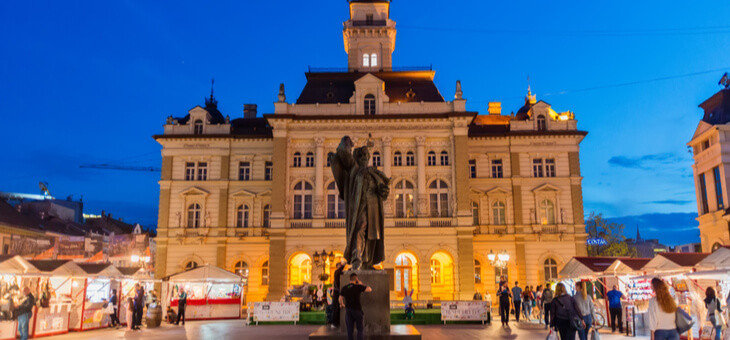The European Capital of Culture is an initiative putting culture at the heart of European cities, with European Union (EU) support for a yearlong celebration of art and culture. It aims to celebrate the cultural features Europeans share and highlight the richness and diversity of cultures in Europe.
During the year, the city will arrange a multitude of cultural events with the purpose of bringing European culture together and drawing the attention of Europe and the world to this particular country and city with substantial cultural and economic benefits.
The first Capital of Culture was Athens in 1985.
This year, there are three Capitals of Culture: Kaunas, Lithuania; Esch-sur-Alzette, Luxembourg; and Novi Sad, Serbia.
Read: European cities that are better in winter
Kaunas, Lithuania
Kaunas is Lithuania’s second-largest city and is a short 1.5-hour car or train journey from the capital, Vilnius. This beautiful city is well known for its outstanding architecture found along the cobbled streets and the pedestrian area of the New Town.
The Old Town is dominated by beautiful 15th- and 16th-century buildings, prominent among them is the Gothic masterpiece Percunas House, and the town hall locally known as the White Swan. There also are the remnants of a 14th-century castle of which only the watchtower and outer walls remain.
During the interwar period, Kaunas was nicknamed ‘Little Paris’ because of its rich cultural life. Architecture and design flourished in the city and both Art Deco and Lithuanian National Romanticism styles are reflected in buildings as well as furniture and interior design of the time. This architecture has received the European Heritage Label, and Kaunas was the first city in Central and Eastern Europe to be designated as a UNESCO City of Design.
Kaunus is also famous for street art and extraordinary museums. Murals can be found on most street corners with one of the most famous being The Wise Old Man. This huge painting covers one side of a former footwear factory and has even been made into official Kaunas souvenirs.
Over the year, Kaunas will host around 1000 cultural events including festivals, exhibitions, performing arts and concerts.
Read: The most beautiful European destinations
Novi Sad, Serbia
Serbia’s second city, Novi Sad, is located in the centre of Serbia’s most culturally diverse region on the river Danube. It’s renowned for being the liberal city of music, art and fun.
Located just over 100km from Belgrade, Novi Sad is easy to reach by bus, taxi or shuttle. Buses depart the central Belgrade bus station for Novi Sad at least every hour, and the journey takes 1.5 hours.
Thanks to the city’s flat terrain, the bike-friendly attitudes of locals and extensive cycle paths, Novi Sad is a great place to see by bicycle, with reasonable hire rates and lots of pick-up and drop-off points. It’s also very walkable. For those looking for a touch of adventure, it’s possible to rent a kayak or canoe and see the sights from the water.
Novi Sad is surrounded by lush farmland and many of the farms (or Salaš) have opened their doors to visitors. Those lucky enough to visit one will be treated to some of the finest food and drink in the entire region. Portion size is almost certainly going to be on the side of the gluttonous. If you’ve got the time, head to a Salaš and be ready to loosen that belt a notch or two.
This year, more than 1500 cultural events with 4000 local, national and international artists will take place.
Read: European cross-border road trips
Esch-sur-Alzette, Luxembourg
Esch-sur-Alzette, Esch for short, is a town in south-western Luxembourg, situated on the border with France. The town is in the valley of the Alzette River, which flows through the town.
Luckily, the train from Esch-sur-Alzette to Luxembourg usually takes 28 minutes on average to travel the 16km. With 71 trains running this route each day, Esch is so easy to visit.
Esch is known as a cosmopolitan town with a lively past, it’s bursting with architectural charms and large shopping facilities.
The recreation centre at Galgenberg offers a beautiful park, marked walking paths, rose-garden, waterfall and fountains, playgrounds, animal park and several sports facilities.
More than 160 projects have been planned for the yearlong celebration.
If you enjoy our content, don’t keep it to yourself. Share our free eNews with your friends and encourage them to sign up.

